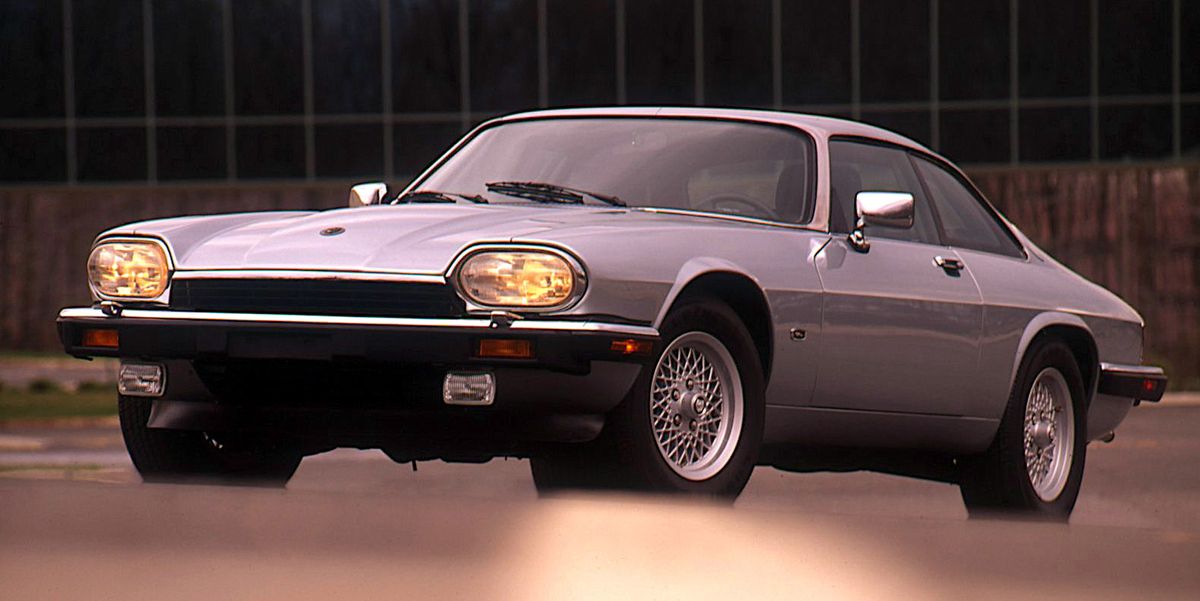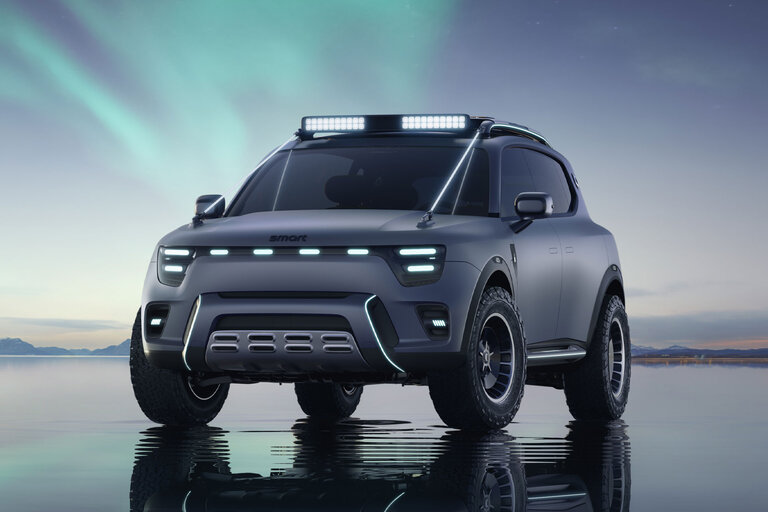
From the July 1991 issue of Car and Driver.
Reaction to Jaguar’s XJS line, at its introduction in 1975, could be summed up in four words: “Works good, looks funny.” On these pages you see a Jaguar XJS that is not new but that no longer looks funny. Like its British colleague the Rolls-Royce, the Jaguar has become a tradition. We have grown accustomed to its fascia, as Professor Higgins might say.
The XJS has undergone, in the words of Jaguar itself, “extensive revisions.” You may need to scrutinize every square inch of the photographs to convince yourself of that, but the evidence is there. For devotees of the marque, as we shall see, there is also good news for the long term that transcends a simple re-skinning. But first, the overview:
In the United States. Jaguar will continue to offer a coupe and a convertible version of its XJS grand tourer, both with V-12 power, both with automatic transmissions only. The 4.0-liter in-line six that drives the Jaguar XJ6 sedan will replace the 3.6-liter six in XJ cars sold in Europe and Canada, a change that will not appear in the U.S. market until the 1993 model year. The U.S. will see the new XJS this fall, and prices will be higher than the $55,905 and $67,565 now paid for the coupe and convertible, respectively.
Before detailing the changes made to the XJS, a detail or two about Jaguar owners is in order. The Jaguar loyalist is an affluent person who wants comfort, speed, and style and doesn’t require it to be wrapped in ultramodern trappings. The Jaguar owner knows that the Lexus LS400 may be a superior car from the standpoint of modernity and reliability. The Jaguar owner just doesn’t care. He (and she) is, in simple terms, a traditionalist. An example: U.S. Jaguar owners, asked to rate the styling of the 1990 XJS, gave it 9.8 out of a possible 10.0. Restrained by such research findings (and, to be sure, by less than an oversupply of money), Jaguar’s changes to the XJ are also restrained.
The XJS exteriors have been changed in ways that are subtle but substantive. In a few words, the skin is more roundly contoured than before, and in a few more words, you need to look at the car in person to grasp the extent of the surgery. You’ll see a new grille, a new headlamp design, a new flared rocker panel, a new C-pillar that produces a different profile, and a rounded rump that includes new taillamps. Where once five panels were required on the coupe’s rear fender, one now does the job—with a consequent improvement in appearance.
Inside, what had been an elegant interior in the British manner has become far more modern in character. There are newly contoured electrically operated seats positioned within a leather-lined compartment that had benefited from the stylist’s hand. The aroma remains superb.
A new instrument cluster with two big dials and four small ones replace the previous unfortunate layout, and there’s a trip computer, controls that are improved in touch and appearance, and a dash area that now matches the rest of the interior. The windshield has been raked more sharply, which improves airflow but does little to minimize headbanging by tall drivers. Once best described as eccentric, the ergonomic atmosphere is so no longer.
The Jaguar 5.3-liter V-12 engine has been graced with a new Lucas 26CU fuel system to go with its Marelli digital-ignition system, and it remains as satisfyingly smooth and silky as ever, even when compared with newer V-12s from BMW and Mercedes. On European-spec cars, the catalytic-converter-equipped V-12 now delivers 280 hp at 5550 rpm, up from 273 at 5250. Its 0-to-60-mph time should drop below eight seconds. Torque is up from 298 to 306 pound-feet at 2800 rpm. This low-speed torque strength remains one of the enjoyable features of the V-12. The figure for U.S.-spec cars will probably be slightly lower.
We can’t imagine that you’ve missed this, but if you’re just returning from Outward Bound’s doctoral program or from the Antarctic, Jaguar is now owned by the Ford Motor Company. When a small company is bought by a large one, two things can come from the large company: money to accomplish needed work (good) and platoons of managers to help do the work (not so good). At Jaguar, the story constitutes a variation on this theme.
To run its new acquisition, Ford installed gruff, hard-nosed Englishman Bill Hayden, CBE, who has spent 41 years learning the rules of Ford corporate combat. He also knows, based on his resume, how to manufacture cars.
“Our objective in all this is quite simple,” Hayden says. “It is to produce better and better quality products here at Jaguar. Our commitment to that objective will be rigorous and unrelenting.”
In the few years he has before retiring, Hayden has taken it upon himself to protect Jaguar from would-be Dearborn “helpers” who might or might not know a hooter from a toast rack—and to apply Ford’s successful manufacturing processes and quality-control procedures to a company whose reputation for quality and reliability left ample room for improvement. The Jaguar officials we spoke with believe that millions of dollars are being spent where it does not yet show, but where it will ensure Jaguar’s long-term survival.
One believer is Mike Dale, ex-Royal Air Force pilot and president of Jaguar Cars, Inc., the company’s U.S. subsidiary. “He’s the toughest taskmaster I’ve ever worked for,” he says of Hayden, “but he’s helping us where we need it.”
It would be inadvisable from our preview drive (involving pre-production cars) to assess the improvement in build quality that Jaguar stands to gain from the Ford way of doing things. But we can say that the V-12 remains a joy, that the cars feel tighter, and that a trip from where you are sitting to a destination 1000 miles distant would be a pleasant day’s drive.
The suspension, a supple fully independent arrangement, not only delivers the excellent ride quality that’s long been a Jaguar hallmark, but also controlled the car quite well on the rough, twisting mountain roads that we used for our exercise pad. Power delivery from the V-12 continues to be smooth, though the GM-supplied Turbo-Hydramatic 400 automatic transmission still has only three speeds. Even at the risk of flying in the face of tradition, another speed or two wouldn’t hurt this unit at all.
On the freeway, the XJS cruises effortlessly, and conversation is possible even with the convertible top lowered.
We have here the latest in a long line. How does its price compare with other grand-touring cars—for example, the Nissan 300ZX Turbo? That’s not the issue, according to Mike Dale. “We don’t see Jaguar in competition with specific models of cars,” he says. “We rather see Jaguar as competing with anything costing $50,000—be it car, boat, or condominium—that an affluent person might consider.”
As long as there are traditionalists, then, there’s reason to believe there’ll always be a Jaguar. In this instance, it’s a better one.
Specifications
Specifications
1992 Jaguar XJS
Vehicle Type: front-engine, rear-wheel-drive, 2+2-passenger, 2-door coupe
PRICE
Base: $58,000
ENGINE
SOHC V-12, aluminum block and head, port fuel injection
Displacement: 326 in3, 5344 cm3
Power: 280 hp @ 5550 rpm
Torque: 306 lb-ft @ 2800 rpm
TRANSMISSION
3-speed automatic
DIMENSIONS
Wheelbase: 102.0 in
Length: 187.6 in
Width: 70.6 in
Height: 49.4 in
Passenger Volume, F/R: 50/24 ft3
Trunk Volume: 9 ft3
Curb Weight (C/D est): 4050 lb
MANUFACTURER’S PERFORMANCE RATINGS
60 mph: 7.8 sec
Top Speed: 147 mph
EPA FUEL ECONOMY (C/D EST)
City/Highway: 13/18 mpg
Contributing Editor
William Jeanes is a former editor-in-chief and publisher of Car and Driver. He and his wife, Susan, a former art director at Car and Driver, are now living in Madison, Mississippi.
#Jaguar #XJS #Calm #Carries
Source link





